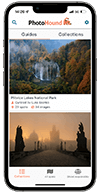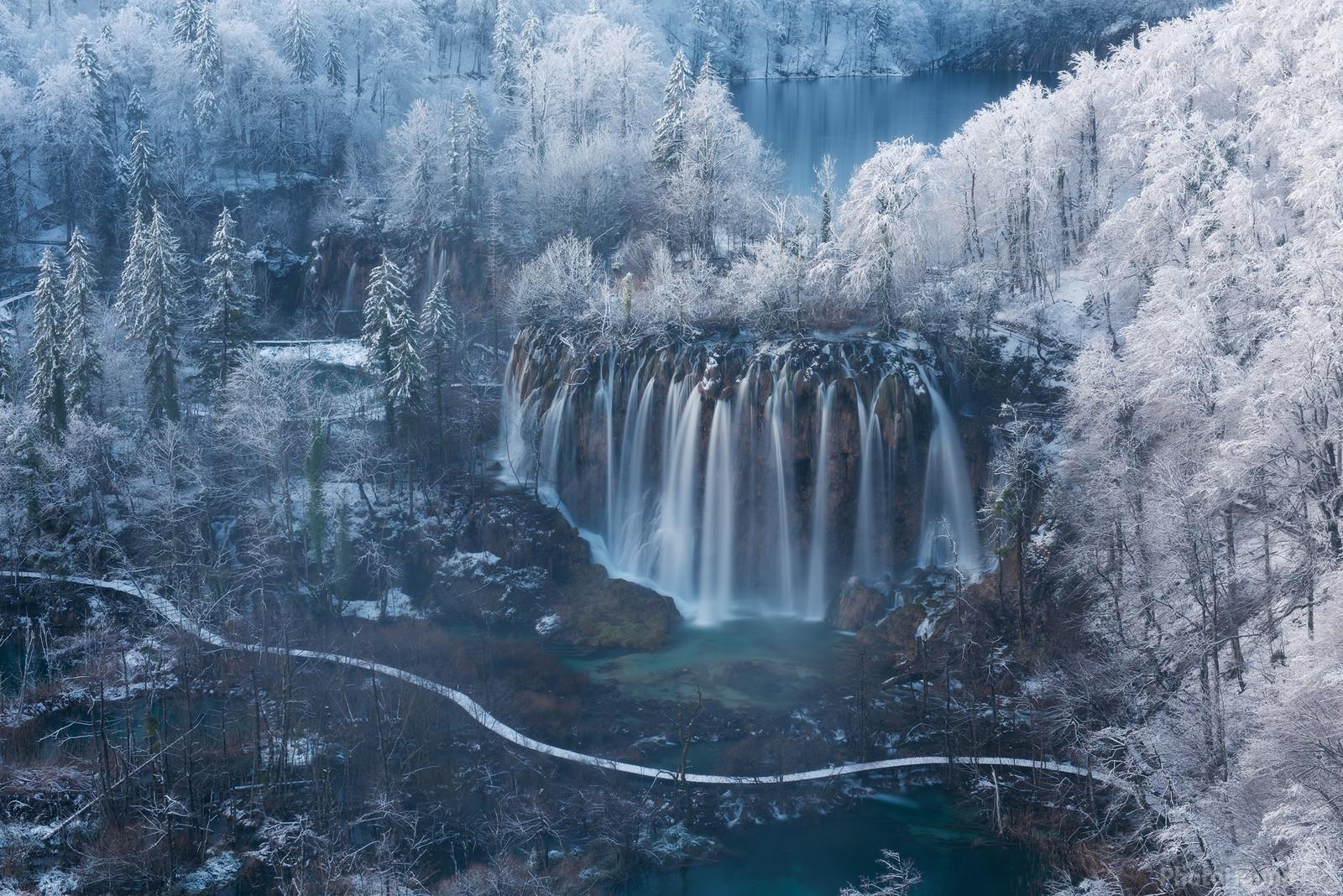 Winter wonderland, Veliki Prštavac
Winter wonderland, Veliki Prštavac
If you had to pick the most photographic location in Croatia, Plitvice Lakes National Park would definitely be up there. The oldest and most spectacular national park in Croatia, Plitvice Lakes is celebrating both its 70th birthday this year as well as 40 years of being a UNESCO World Heritage site. In this blog post, Head Houndcho at PhotoHound, Luka Esenko, shares his top tips for photographing Plitvice Lakes throughout the year…
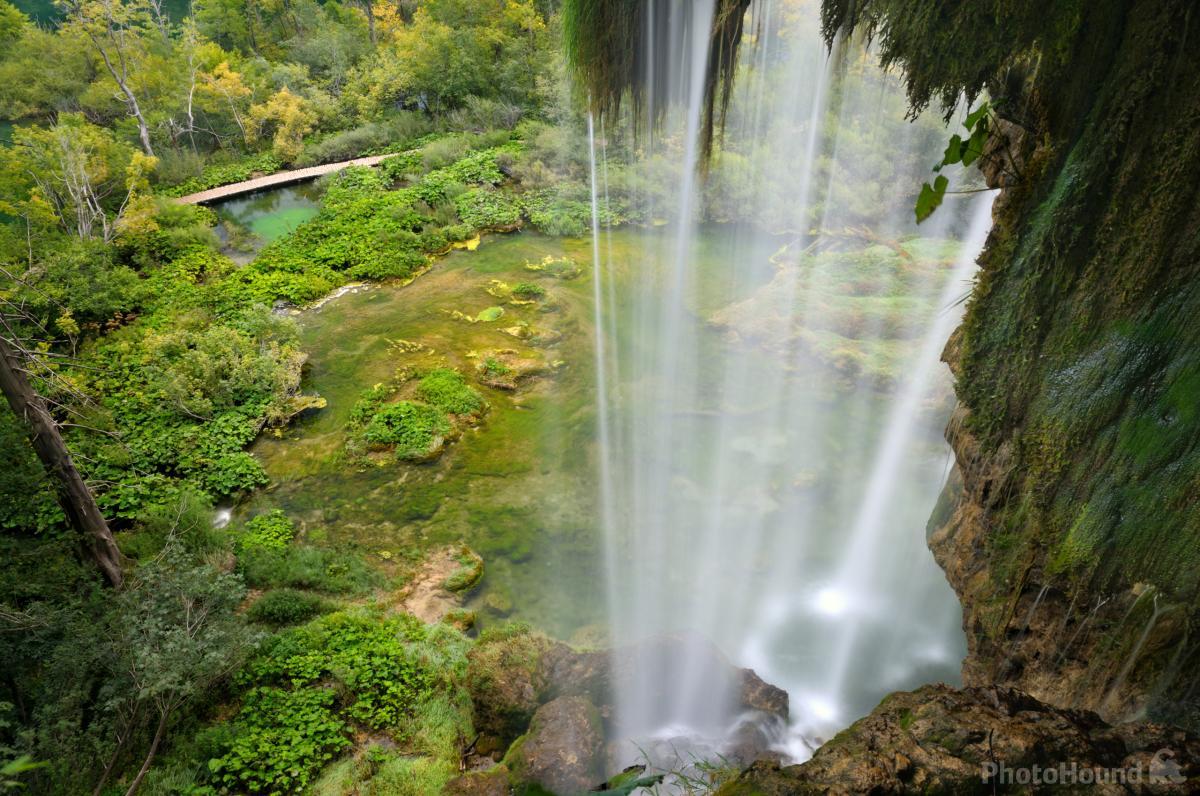 Behind the curtain at Veliki Prštavac
Behind the curtain at Veliki Prštavac
Where is Plitvice Lakes National Park?
Plitvice Lakes National Park (Plitvička jezera) is located in the mountainous region of Croatia, between the Mala Kapela mountain range in the west and northwest, and the Lička Plješivica mountain range to the southeast. The park is approximately a 2 hour drive from either Zagreb or Zadar airport.
When is the best time to visit?
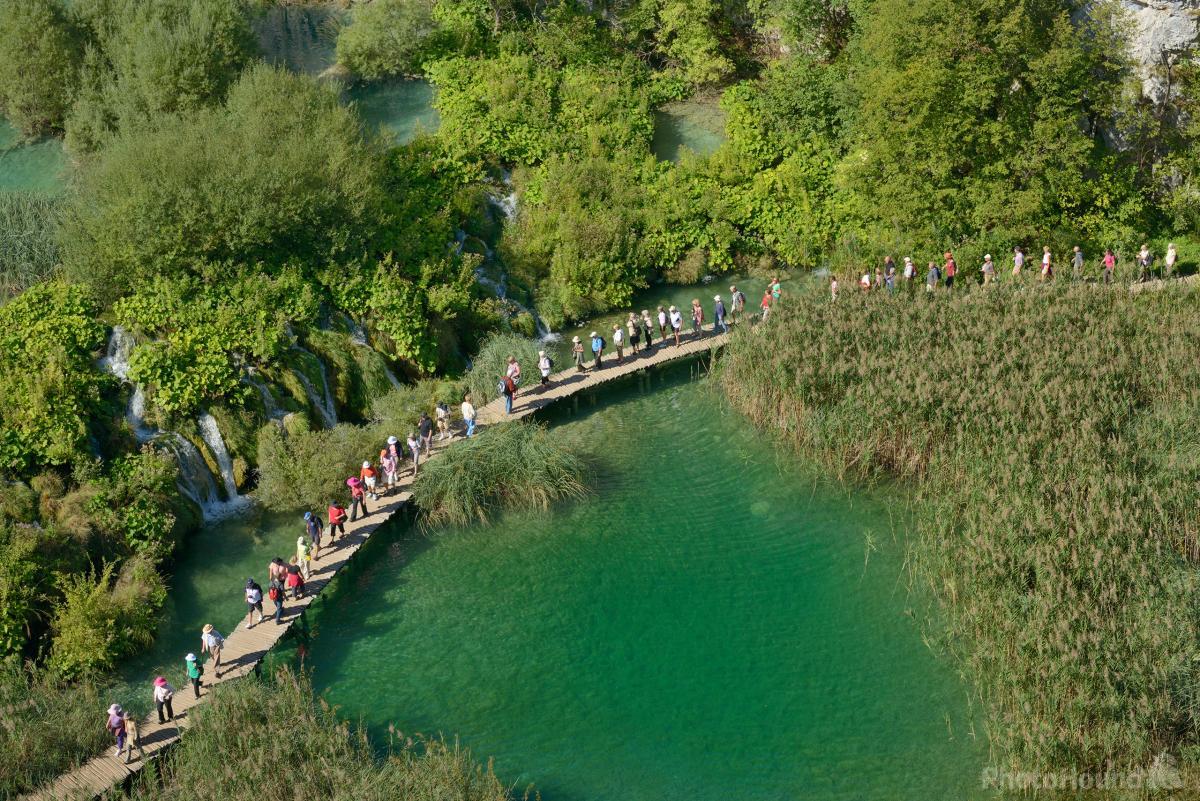 If you do visit in summer, you can always use the tourists artistically in your composition
If you do visit in summer, you can always use the tourists artistically in your composition
My top tip is to avoid summer! At this time water levels in the park are low and some waterfalls dwindle to a trickle. Also, this is the peak time for tourists and highest number of visitors in the park. That said, If you do visit in summer, rain is your friend! On rainy days, there will be fewer tourists around and the weather makes it atmospheric – especially just as the rain is approaching or as the sun starts to come back out. Be prepared to get wet!
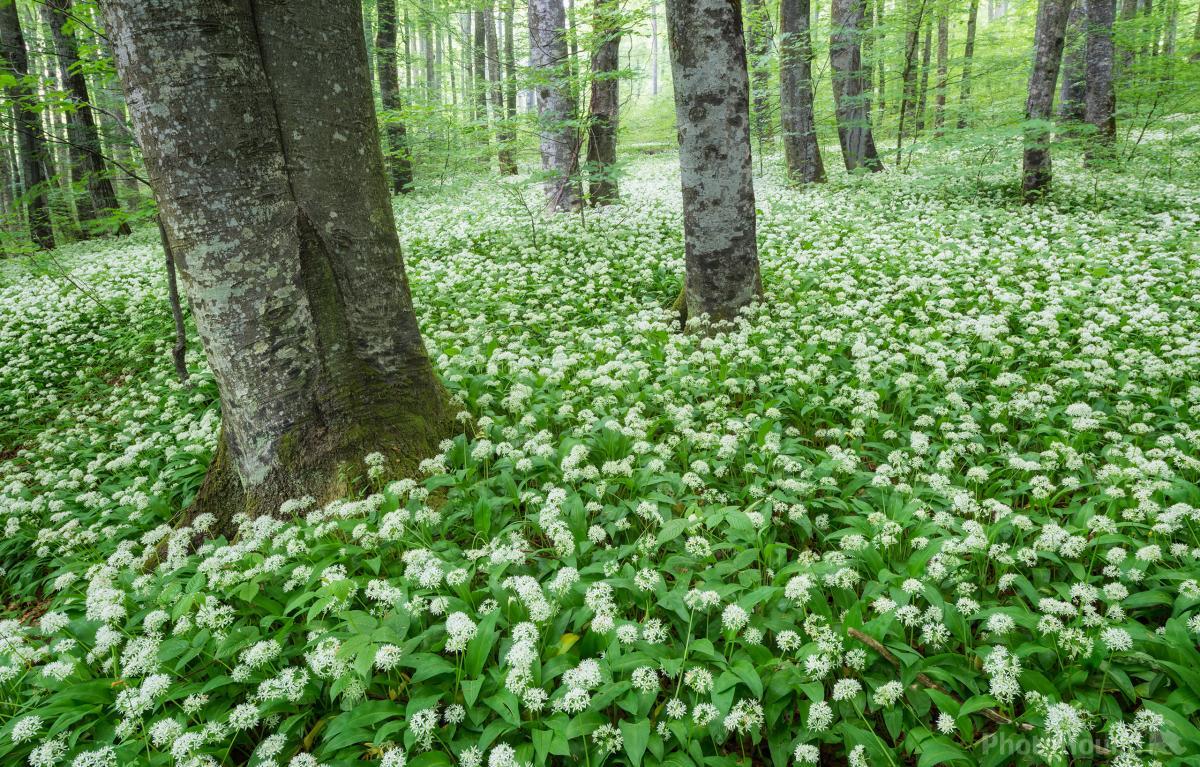 Wild garlic covers the forest floors in springtime
Wild garlic covers the forest floors in springtime
Spring is a joyful season in the park. Fresh greens everywhere, forests blooming with wild garlic, water in abundance and birds and insects aplenty… Spring provides great macro photography opportunities as well as the classic wider vistas. The best time to visit is May through to mid June (before the start of the school holidays). April can sometimes be subdued because of the park’s high altitude and in mountainous climates spring often arrives late. Spring days are longer which means you can enjoy early mornings and late afternoons in the park without the usual tourist crowds.
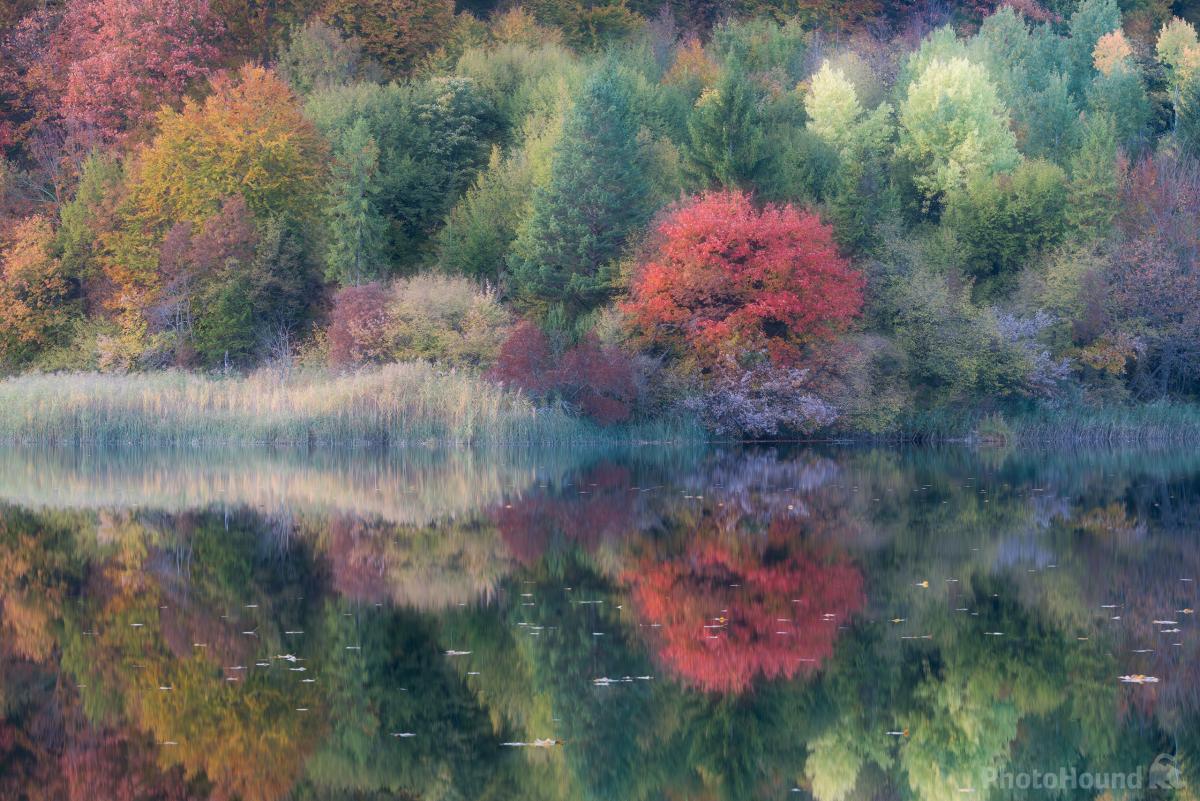 Reflections on a still autumn day
Reflections on a still autumn day
Autumn is a completely different story. The park takes on a more melancholic atmosphere, often misty and usually full of muted fall colours. This is my favourite season. Autumn days are shorter, but this means you can actually visit the park in best morning light! My suggestion is to take the first boat to the upper lakes and photograph the early sun as it hits the waterfalls. On calm days with no wind, autumn is also best for reflections – a variety of colour will give you interesting patterns in the water. It is hard to guess when the colours will be at their peak as every year it is different, but this usually occurs around 10 – 20 October. Regardless of whether you are slightly too early or late in the season, you can be sure that beautiful photo opportunities await you.
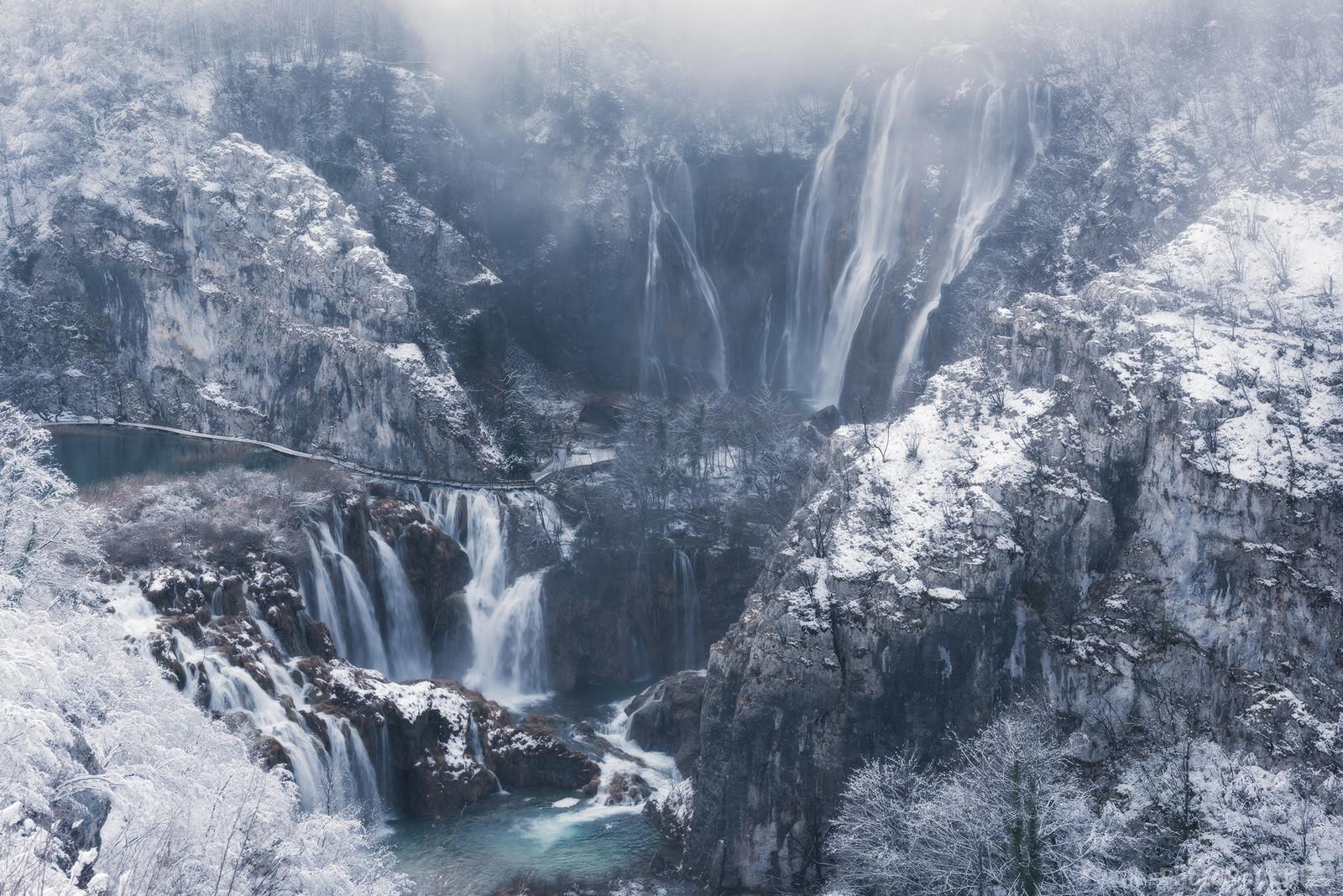 Winter scene at the Lower lakes
Winter scene at the Lower lakes
And what about Winter? This can be pot luck as there is no way to predict snow and ice long term. If you can, plan last minute, follow weather reports and webcams to see if there is snow and/or ice in the park. This is the quietest season to visit the park. That said, the upper lakes are usually closed – especially if there is snowfall. It is still possible to visit the upper lakes if you are willing to do some strenuous walking. If snow is heavy, snowshoes are the only way to get in. The boardwalks covered in snow can be perilous and it’s all too easy to slide off into the water and you cannot see if the boardwalk is damaged or fine.
In summary, spring, autumn and winter can all be rewarding for photography at Plitvice Lakes. If you have the chance, visit the park in different seasons and allow enough time to get to know it. It is one of the most beautiful places in Europe and relatively easy to photograph.
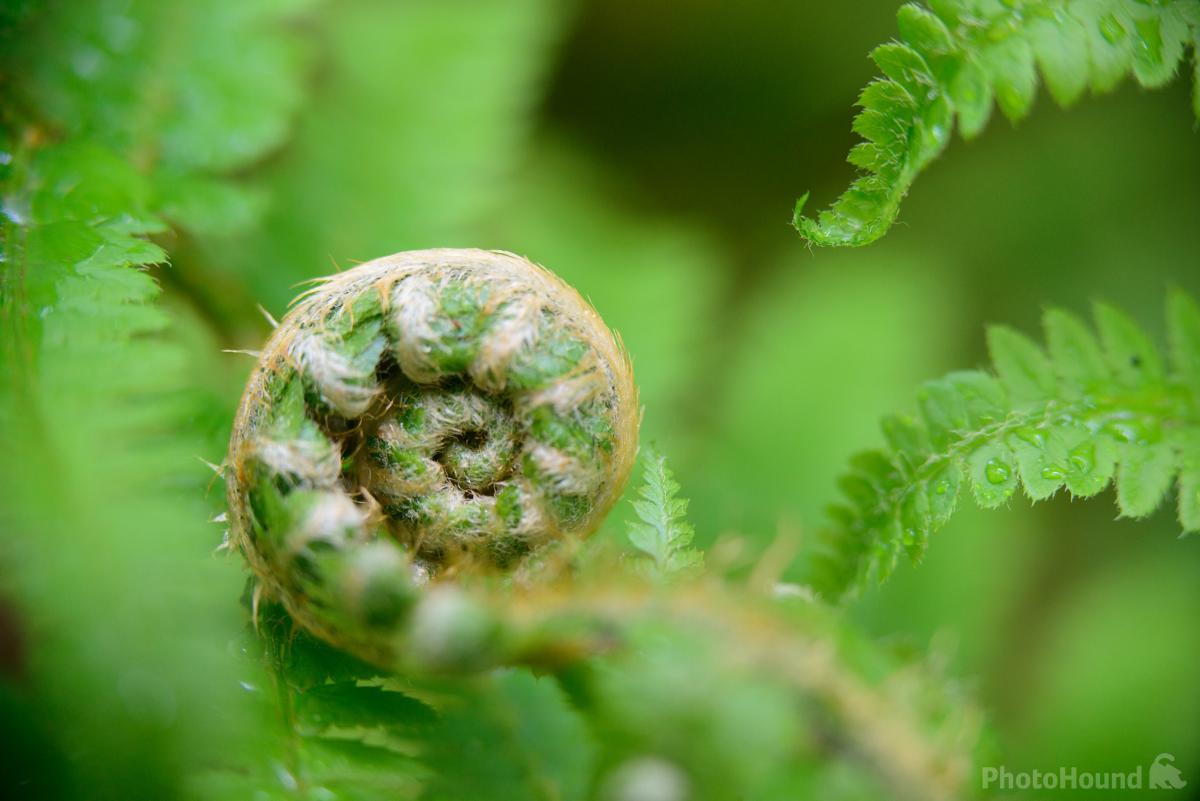 Enjoy smaller scenes at the lakes in contrast to classic panoramic views
Enjoy smaller scenes at the lakes in contrast to classic panoramic views
How can I make the best of my photography trip to Plitvice Lakes?
Avoid shooting during the middle of the day – focus on early mornings and late afternoons. By 10am it is nearly impossible to photograph from the boardwalks as there is constant flow of tourist groups. It becomes calm again sometime after 4pm.
The 16 lakes and waterfalls and lakes only make up about 1% of the park. Take time to discover Plitvice’s pristine forests and hiking trails as well. Photographing the forest here is another good way to avoid the tourist crowds, and these are some of the most amazing forests I’ve ever seen. Check out the trail maps at the park gates.
Spend at least two nights at the park. This will allow you to have two mornings and two evenings in the park to photograph in relative peace. During the day there is plenty to do nearby, for example visit Rastoke, a watermill village at Slunj, or Ranch Deer Valley, there’s an airbase at Željava near the Bosnian border, or why not try some outdoor activities like horseback riding, off-road, ATV tours or visit one of the adrenalin parks?
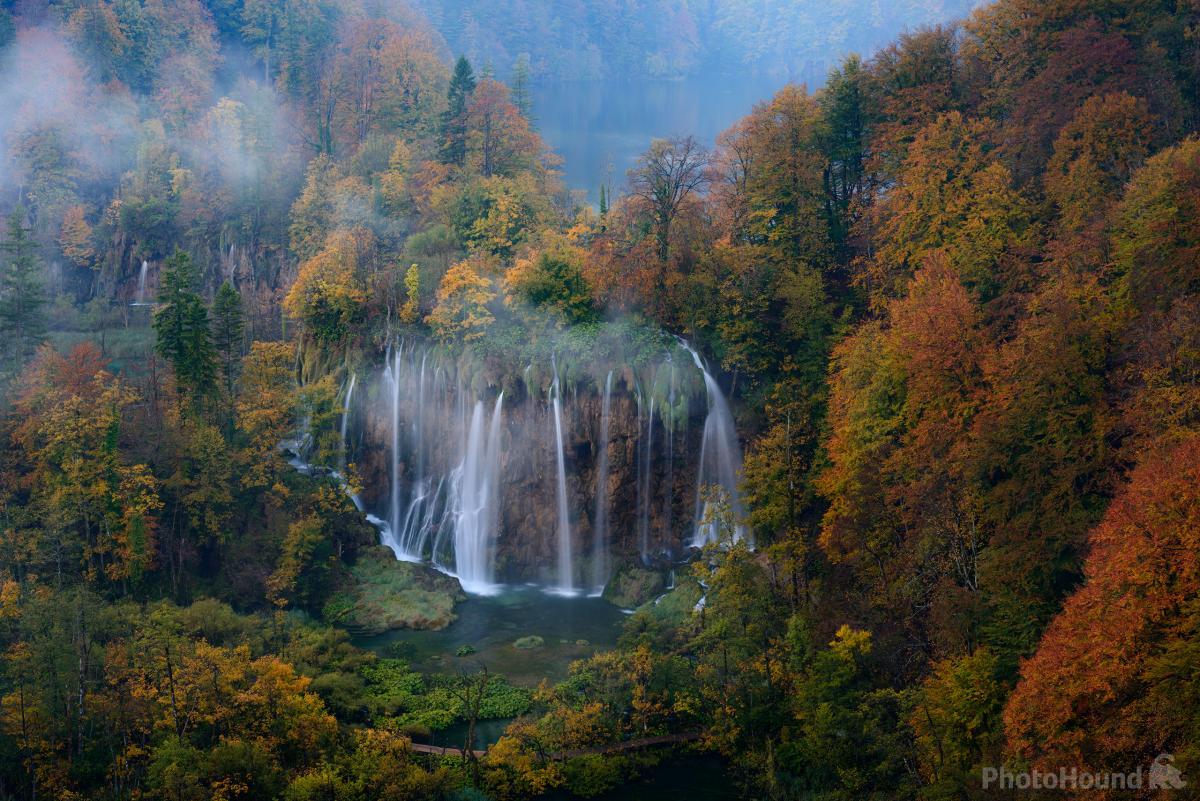 Veliki Prštavac from above
Veliki Prštavac from above
How can I photograph the park in a responsible way?
Like any popular national park these days, Plitvice Lakes NP is often under pressure due to the high number of visitors. Some days there can be up to 15,000 visitors in a single day! Because of this it is even more important to respect the rules when visiting the park. Photographers may be tempted to leave the boardwalks to find better angles or to use a drone for aerial views – both are illegal so please respect the guidelines – there are so many amazing shots we can create in acceptable ways which won’t be damaging to the park.
Check out the PhotoHound Code of Responsible Photography and Nature First’s initiative for guidelines on how to be a responsible photographer in nature and join us in leading by example.
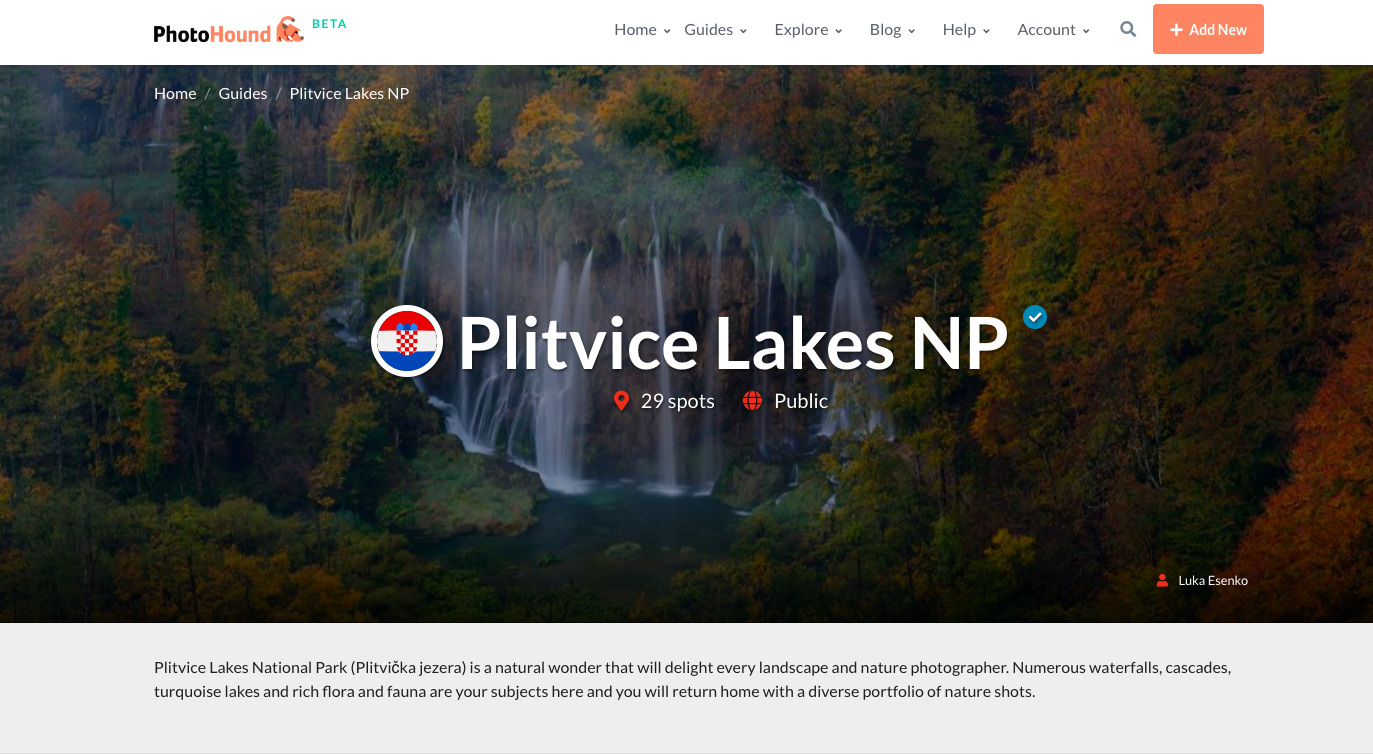 Check out Luka Esenko’s Guide to Plitvice Lakes on PhotoHound
Check out Luka Esenko’s Guide to Plitvice Lakes on PhotoHound
Want to know more?
If you are interested in finding out more about the best photo spots at Plitvice Lakes national park (and elsewhere in the region) check out Luka Esenko’s Guide on PhotoHound, to have all you need to photograph the park like a local!
This article was first published on Luka Esenko’s blog.
